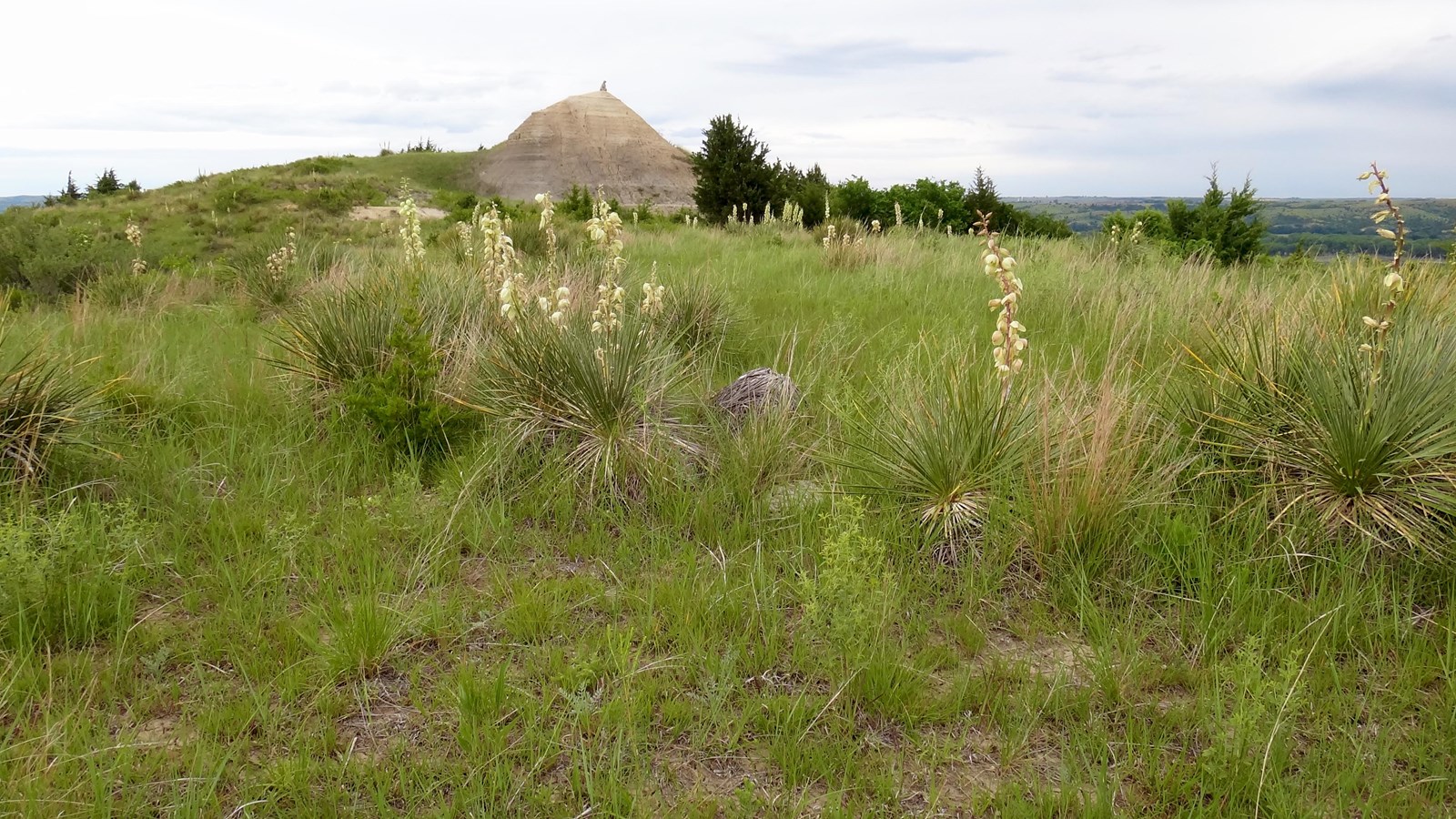Last updated: September 1, 2020
Place
The Tower

NPS
Quick Facts
Significance:
National Register of Historic Places
OPEN TO PUBLIC:
No
Lewis and Clark NHT Visitor Centers and Museums
On September 7, 1804, the expedition landed near “the foot of a round mounting […] resembling a dome”, which Clark had sighted the previous day. Clark wrote, “Capt Lewis & my Self walked up, to the top which forms a Cone and is about 70 feet higher than the high lands around it, the Bass is about 300 foot in decending this Cupola, discovered a Village of Small animals that burrow in the grown (those animals are Called by the french Pitite Chien).” They managed to kill one prairie dog and capture a second, which joined the expedition and survived the winter at Fort Mandan. In the spring, it (along with other collected specimens) was sent downriver and transported to Washington, D.C., to be received by President Jefferson on October 4, 1805. Lewis and Clark are credited with the first scientific description of the prairie dog, or Cynomys ludovicianus.
The appearance of the Tower has changed very little since it was first documented by Lewis and Clark. Located about a half-mile south of the Missouri River in Boyd County, Nebraska, the landform rises an ad-ditional 70 feet above a line of bluffs along the southern edge of the Missouri valley. The surrounding land-scape is characterized by open prairie and burr oak woodlands. In 2005, a 524-acre conservation easement was enacted to protect the Tower and the environs. Although the site is privately owned, it can be viewed from multiple vantage points along nearby roadways.
